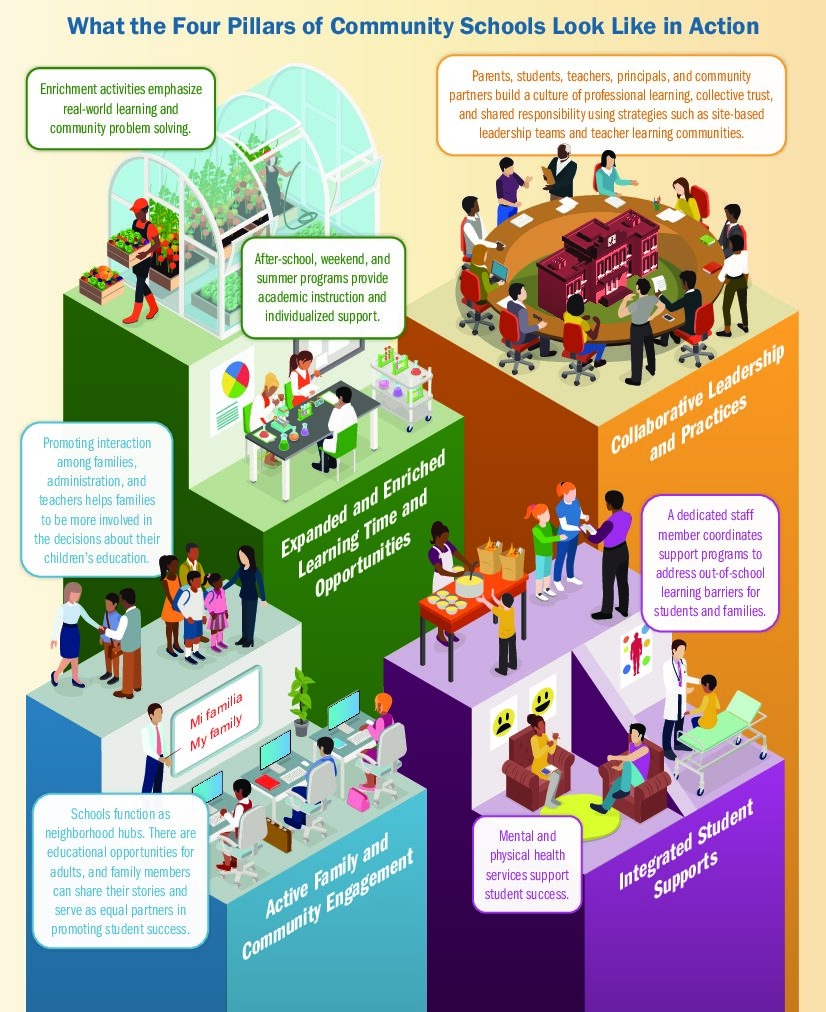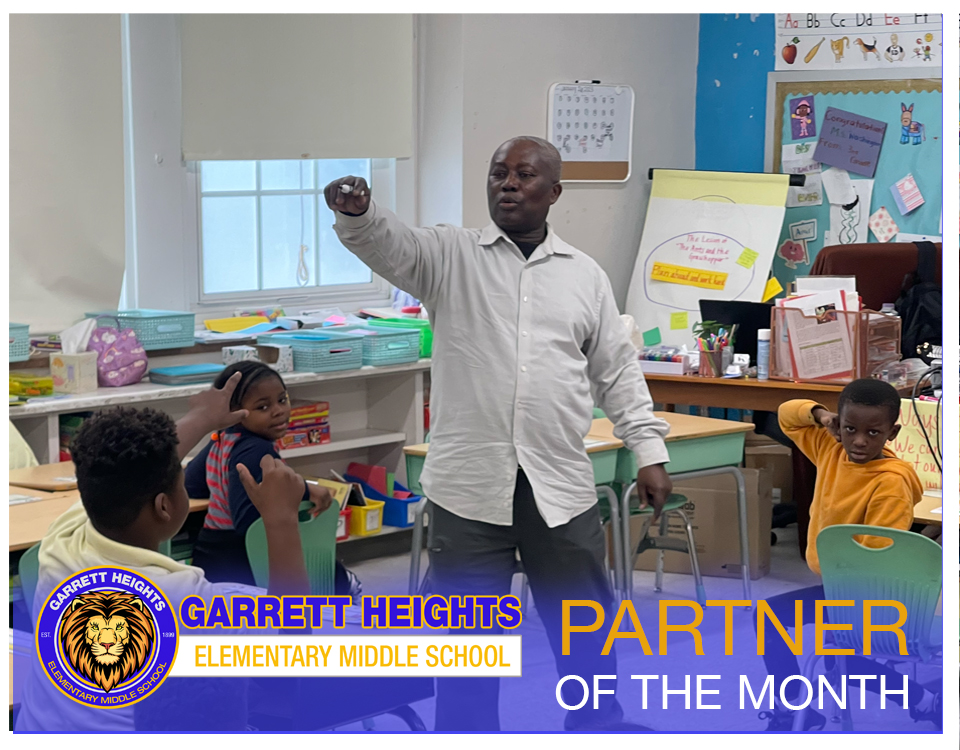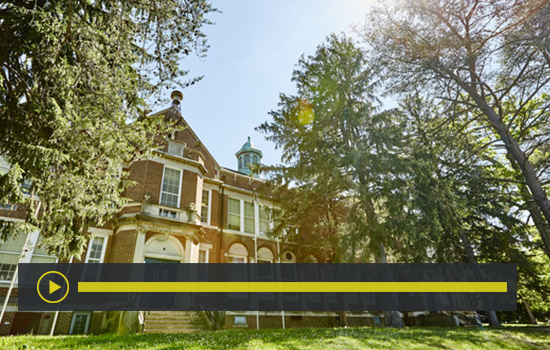Food Give Away – Thursday’s
Food Give Away every Thursday BYOB

Discover Our Community School
The primary objective of the Community School Coordinator is to implement a evidence-based school improvement strategy at GHEMS. This involves establishing partnerships with community organizations and local government to create a comprehensive focus on academic improvement, health and social services, youth and community development, and community engagement. The approach encompasses four key pillars:
1. **Integrated Student Supports**
2. **Expanded Learning Time and Opportunities**
3. **Family and Community Engagement**
4. **Collaborative Leadership and Practices**
The overarching goal is for GHEMS and its community partners to collaboratively plan and work together, fostering a school culture that is both collaborative and collegial. I am dedicated to ensuring that our community partnerships are mutually beneficial. To effectively achieve this, I seek your assistance. I am in the process of developing a dedicated web page for the community and our partners. However, a community page is incomplete without feedback from its members.

As a guide, most of the work done by a Community School Coordinator must fit into one of these four pillars.
They aim to help children thrive, learn and become successful members of society. There are more than 5,000 such schools in America, and most of them have appeared in the last ten years.
While there may be a slight difference between the community schools and the programs they offer, they are all based on four main pillars:
– Integrated student supports
– Expanded learning time and opportunities
– Family and community engagement
– Collaborative leadership and practice
As a community school we strive to provide our scholars and their families all the resources needed to support their over-all well being. We have a list of community resource providers ready to provide support to families in the GHEMS community.
GHEMS is all about the business of educating children. To help our educators and staff get some of the things they need sources to provide students the very best learning environment, we have created a school wish list on amazon, to give community partners and school supporters an opportunity to help.
We are proud of the opportunities we provide to our scholars, and we know how important student achievement is to our families. Which is why we are asking for donors to invest in a student’s education to assist us in continuing to provide higher levels of programming and services than what we could with a government funded baseline.
We will soon begin having registered volunteers in and around the school. If you are interested in volunteering here at GHEMS, please begin by becoming a registered volunteer with Baltimore City Public Schools. All registered volunteers will be notified when volunteer opportunities become available.
Community schools are a strategy for organizing community resources around scholar success. Community schools view scholar success holistically, including not only academic success but also social-emotional development, healthy living, safe and supportive communities, and life skills preparedness.
Public schools play an important societal role in providing a free education to any student, yet students come to school with their own individual backgrounds, strengths, and challenges. The community school strategy enables public schools to work collaboratively with their local communities in order to support the diversity of their student body. Through these collaborations, community schools have helped students achieve greater success while also reducing significant economic and social barriers
Community schools often differ because they are based on the unique needs and strengths of their local communities. However, most community schools have the same basic attributes. Most offer a rigorous instructional program, expanded learning opportunities, health care and social services, and an emphasis on family and community engagement.
The idea that schools, families, and communities should work together for the success of students is not new. Social reformers such as Jane Adams and educational reformers such as John Dewey promoted community school ideas over a hundred years ago. What’s significant about community schools today is
There is no official induction ceremony or certificate awarded for schools to “become” a community school. “True” community schools have authentic and collaborative leadership and practice, meaning that at all levels of the school, particularly at the leadership level, educators, families, and community members are working in tandem for and sharing the accountability of the success of students. All of this is predicated on trusting relationships.
Neighborhood schools are often confused with community schools. A neighborhood school is a school whose student body comes from neighborhoods geographically local to the school. While many community schools also happen to be neighborhood schools, or at least their strategies support geographically local neighborhoods, community schools are more expansive than neighborhood schools. Also, a school that has partnerships with community organizations is not necessarily a community school. Community schools are a strategy, and they are based on collaborative leadership and practice, not the sole existence of a few programs.
As a community school we strive to provide our scholars and their families all the resources needed to support their over-all well being. We have a list of community resource providers ready to provide support to families in the GHEMS community.
GHEMS is all about the business of educating children. To help our educators and staff get some of the things they need sources to provide students the very best learning environment, we have created a school wish list on amazon, to give community partners and school supporters an opportunity to help.
We are proud of the opportunities we provide to our scholars, and we know how important student achievement is to our families. Which is why we are asking for donors to invest in a student’s education to assist us in continuing to provide higher levels of programming and services than what we could with a government funded baseline.
We will soon begin having registered volunteers in and around the school. If you are interested in volunteering here at GHEMS, please begin by becoming a registered volunteer with Baltimore City Public Schools. All registered volunteers will be notified when volunteer opportunities become available.
Community Schools Partnerships offer communities the opportunity to support the needs of children and families with an intentional, enhanced and supported academic, social and emotional health experience in the school setting as well as at other local agency and community-based sites.
GHEMS is all about the business of educating children. We are proud of the opportunities we provide to our scholars, and we know how important student achievement is to our families. To help our educators and staff get some of the things they need to provide students the very best learning environment, we have created 5 opportunities for the community to invest in GHEMS. By investing is a student’s education you assist us in continuing to provide higher levels of programming and services than what we could with a government funded baseline.
“Community Schools develop a culture in which the overall well-being of the students is supported, so that teachers can focus on the job of teaching.”
– E. Santiago
Food Pantry: Thankful Thursday’s – an on-going Food Pantry
Student Event – Free All expenses paid, College tour in New Orleans. Registration Required.
GHEMS Fall FestivalThis year’s Fall Festival was full of fun and excitment.We had the “The biggest, the loudest, the craziest party ever! Huge GHEMS Thanks to everyone who made it out to the GHEMS Fall Festival. Scholar’s of all ages enjoyed the games and food provided by the school and our parent group, the Friends…
Medical and Health Care Services Provided by Charm City Community Care
Cell Phone & Food Distribution Every Mon & Sat – Security Mall
Free Fresh Food Boxes – Arghihood Baltimore Food hub
Charm City Community Care – Free Services for Medicaid Clients
Food Distribution – Jan 3, 2024 @ Noon – At the Walmart – 3801 Liberty Heights Ave
Create a winning resume, Apply to jobs, and Enroll in over 30 free training programs including CDL, CNA and more
Job Opportunity – Horseshoe Casino – Please share and take advantage of these opportunities.
Summer Jobs – Youth Works Applications Now Open.. Apply Today!
Food Distribution – Central Baptist Church – 2301 W. Baltimore St – Jan 2. 2024 2 PM to 4:30 PM
Food Pantry: Thankful Thursday’s – an on-going Food Pantry
Student Event – Free All expenses paid, College tour in New Orleans. Registration Required.
GHEMS Fall FestivalThis year’s Fall Festival was full of fun and excitment.We had the “The biggest, the loudest, the craziest party ever! Huge GHEMS Thanks to everyone who made it out to the GHEMS Fall Festival. Scholar’s of all ages enjoyed the games and food provided by the school and our parent group, the Friends…
Medical and Health Care Services Provided by Charm City Community Care
Cell Phone & Food Distribution Every Mon & Sat – Security Mall
Free Fresh Food Boxes – Arghihood Baltimore Food hub
Charm City Community Care – Free Services for Medicaid Clients
Food Distribution – Jan 3, 2024 @ Noon – At the Walmart – 3801 Liberty Heights Ave
Create a winning resume, Apply to jobs, and Enroll in over 30 free training programs including CDL, CNA and more
Job Opportunity – Horseshoe Casino – Please share and take advantage of these opportunities.
Summer Jobs – Youth Works Applications Now Open.. Apply Today!
Food Distribution – Central Baptist Church – 2301 W. Baltimore St – Jan 2. 2024 2 PM to 4:30 PM

Mr. E. Addo – BMAA – Morgan State University

